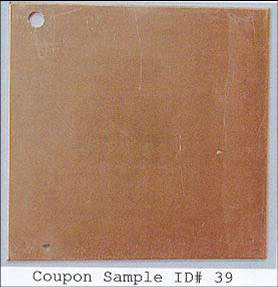 |
| No Corrosion with SAM's |
How Well Does SAM’s Withstand Corrosion?
Corrosion easily eats away at precious metal plating and requires the manufacturer to replace or replate an item again and again. With SAM’s though, precious metals like gold last longer because they are protected with a molecular shield. During testing, gold plated components went through the post-plate SAM’s process and were exposed to three common corrosion tests to see how well it held up.
The tests included exposure to Nitric Vapor ASTM B 488, Sulfurous Acid, and Potassium Hydroxide (85%) in solution. With SAM’s, the gold plated components used in the tests withstood the exposure to the corrosives without incurring the damage as plated items without the molecular shield. The tests were also designed to analyze the molecular shield and see how well it protected the durability, purity, and hardness of the plated items.
Why Does SAM’s Help with Corrosion and Solderability?
To understand why SAM’s helps with corrosion and solderability, you have to look at the porosity of gold plating, for instance. Porosity defined is the “void fraction of a material and is a measure of the voids in a material with respect to the volume of the material.” Usually, in order to reduce porosity to improve solderability and the effects of corrosion, manufacturers simply make the precious metal coating thicker. This is much more expensive and doesn’t entirely fix the problem. It simply delays it for a longer period of time. This can also cause gold embrittlement, which leads to solder joint failures as well.
With SAM’s, a shield of self-assembled molecules forms a barrier over the precious metal plating. This drastically improves porosity by nearly eliminating pores from the surface material. By reducing porosity, the metal plating is now able to withstand corrosive elements and materials for longer periods of time without succumbing to corrosion.
As this happens, the plated item also experiences improved solderability. This is because corrosion eats away at soldering, and when the surface is not being corroded, soldering lasts longer. In addition to this, less precious metal is needed because SAM’s doesn’t require manufacturers to increase metal thickness to solve corrosion issues.




